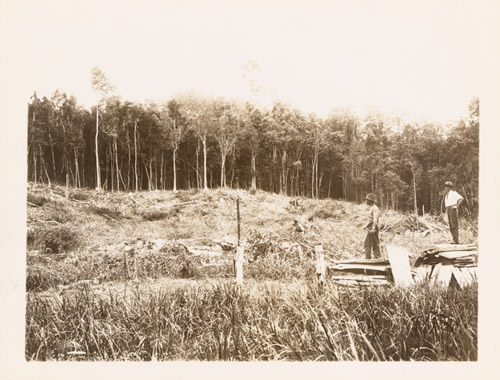Looking after the land
When the first European settlers arrived in Australia, they were faced with a climate and an environment which were quite different from what they were used to. Compared with Europe, Australia’s soils are less fertile, the country is hotter and drier and the continent is geologically much older. This means that the land, in general, is flatter and made up of different nutrients and less efficient drainage systems.
> Find out more about water management and irrigation in Australia
Until very recently, agricultural practices in Australia were imported from Europe and farmers and land managers tried to change the land to conform to traditional farming techniques. Excessive land clearing, overgrazing and inappropriate irrigation systems have all led to many areas of rural Australia suffering land degradation in the form of massive soil erosion, soil salinity and waterlogging. However with better soil conservation and land management practices in place, the financial losses incurred by land degredation can be reduced.
 Scrub clearing, Queensland, Series 16: Agriculture and primary industry, ca. 1921-1924 by Rev James Colwell. Photograph PXB 310 / 301
Scrub clearing, Queensland, Series 16: Agriculture and primary industry, ca. 1921-1924 by Rev James Colwell. Photograph PXB 310 / 301Australia’s extreme weather can also play havoc with agricultural yields. Drought is one of the most devastating of Australia’s climactic extremes and images of parched land and starving stock have become iconically Australian. At the other extreme, flooding is also a regular occurrence in many parts of Australia, ruining crops and grazing land. Bushfires are a summer hazard, meaning that backburning and scrub clearing is an essential part of land management for many rural families.
> Find out more about droughts, floods, bushfires and natural disasters
Life on the land can also be plagued by another environmental problem – pests. Most of the really destructive animal and plant pests are introduced species. 19th century settlers, in their effort to ‘tame’ Australia and make it more like the familiar British ‘homeland’, introduced plants and animals which thrived in the new climate, outcompeting native species. Rabbits, foxes, mice and blackberries are examples of introduced species which have wreaked havoc on crops and livestock as well as on native biodiversity. Insect pests are also an issue on the land. Sheep suffer from flystrike and crops can be razed to the ground by locust plagues. Eradication and control measures
> Find out more about pests which affect agricultural production




